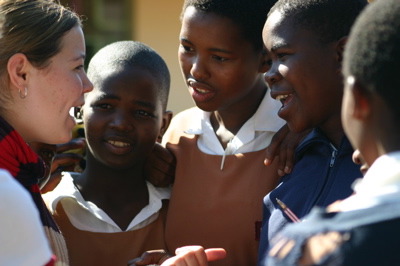

Minimizing risk on a mission project
The missions agency I run, AIM, seeks to minimize the risk inherent in any mission venture. We also seek to fully disclose the level of
known risk on our projects. We use the
most credible sources available to assess the risk, and take steps to minimize
these risks. Of course all of life has
its risks. The areas where our teams minister
each carry their own particular areas of concern.
 Let’s look at Kenya as an example of risk.
Let’s look at Kenya as an example of risk.
Political
Stability for Kenya
– (
Measured risk)
Kenya
is a developing east African country.
The capitol is Nairobi. Although the government is stable, there are
occasional demonstrations during elections.
These are not particularly dangerous to visitors in Kenya, but it is still a good idea
to steer clear of any known areas where demonstrations are planned.
Lodging
and Food – (
Limited Risk)
The team will prepare most of their food.
Tourist
Safety – (
Considerable risk)
Our teams are welcomed in all areas. They did experience some animosity from
Muslims by way of wary looks. Many of
these very people, after hearing the message of the gospel, changed from wary
of the Americans to trusting in Christ.
As in any developing country, the highest risk is for petty theft. If something of value is set down, it will
get stolen. There is very little violent
crime associated with this. Common sense
in keeping a hold of valuables is the key.
In recent months, the U.S. Government has sent out announcements to
travelers warning them of the possibility of potential threats. These threats have not been directed to
Christians or Americans. In any case,
travelers should maintain security awareness at all times.
International
Transportation Safety – (
Measured risk)
While Nairobi
is a common tourist destination, there was a threat on an Israeli airplane in
November of 2002. There has not been a
problem since then. Routing of the
itinerary may be through Arabic countries where display of any Christian
symbols is illegal. This is easily
planned for by not wearing any Christian clothes or jewelry. A passport and visa are required for
entry. Please await instructions from
AIM before obtaining your visa.
Local
Transportation – (
Limited risk)
The team will largely travel by hired van
drivers. Since tourism is so prevalent
in Kenya
for safaris, the drivers are very experienced.
We have contracted drivers who we have on previous trips, and use them
for the entire stay.
Exposure
to Disease – (
Considerable Risk)
Even using the best training and precautions
against disease cannot prevent exposure to everything. AIM advises each participant to follow the
suggested medical preventative measures provided by the Center for Disease
Control. This is a very conservative
agency that often generalizes needs in a given part of the country. For this reason, we have found that our local
contacts also are a good source of up to date information on needed medical
precautions. Risk is greatly reduced if
the precautions are followed. However,
we do want you to be aware that Kenya
does have a fairly high rate of Malaria.
We feel it is also important to inform you that the inoculation you
receive may not protect you from all strains of Malaria. We also suggest that you take precautions
with typhoid prevention.

What resources do you use to research these risks?
I wasn’t able to put my chart up here that shows specifically the resources that we used for each area, but I’ll list five of them here:
local contacts
Center for Disease Control
consulates
setup trips
various web sites when needed
Risk Level Definitions:
Limited Risk – no areas of special concern.
Measured Risk – some areas of special concern need to be mentioned.
Considerable Risk – Definite areas of concern.
Is there a spectrum among the type of risk you have listed – looks to me like:
1 – considerable
2 – measured
3 – limited
where the smaller the number, the bigger the risk. is that right?
Very helpful information!